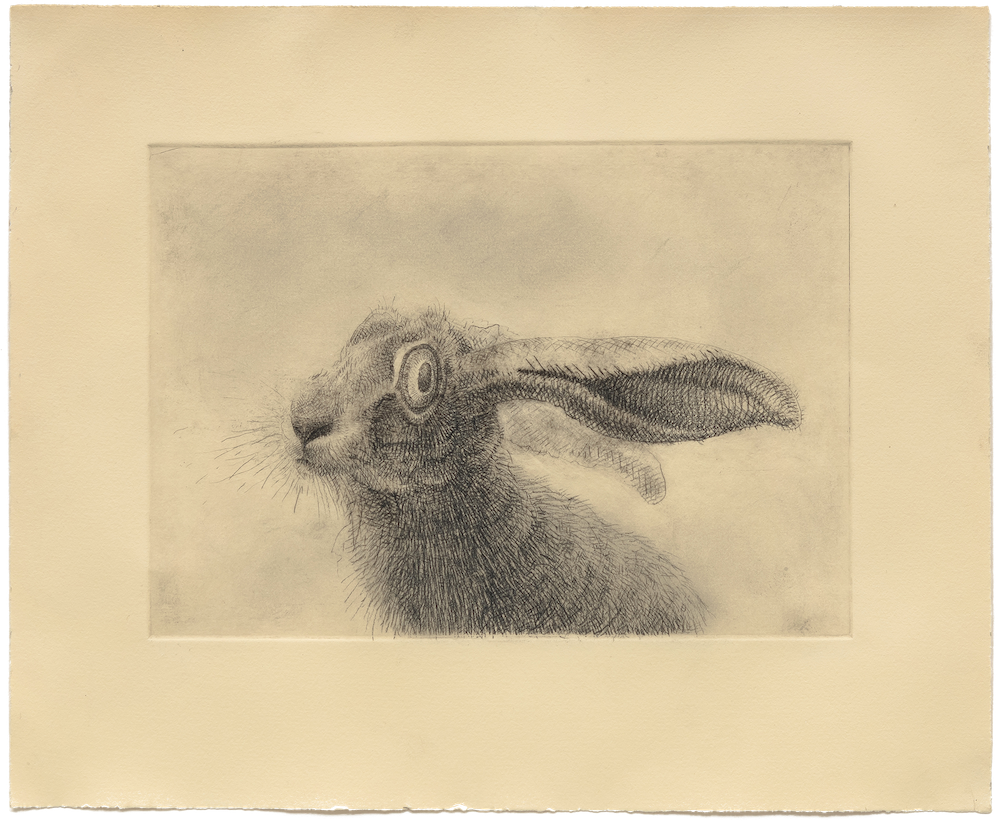Tom Knechtel, a Los Angeles–based artist who shows with PPOW in New York and Marc Selwyn Fine Art here in LA—where his exhibition, “The Hare in the Studio,” just ended in June—is known for his intricate paintings and drawings, often depicting himself, animals and important players in his life. Although one might assume his work is autobiographical, Knechtel insists it is not—“It’s personal and I am often in the work.” The other important people in his life “all become actors who are passing through the work.” Knechtel skillfully executes pencil, ink, pastel and
silverpoint drawings with the deftness of the Old Masters. Each tool dictates his content, for instance, silverpoint which, by its nature, he tells me, “manages to be both very concise and kind of at arm’s length at the same time, which seems to be interesting for images that are introspective and retrospective.” Knecthel received his BFA and MFA in the ’70s at CalArts, where he was classmates with Thomas Antell, whose work he continues to admire to this day.

Thomas Antell, The Ownership of a Plank, 2022. Photo: Daniel McCullough.
Thomas and I were in Emerson Woelffer’s painting class, where he introduced me to the work of Max Beckmann, who is a lifelong favorite of mine. Thomas’ work, even then, was this very eccentric figuration. It was deliberately ham-fisted and somewhat clumsy in its handling. From Beckmann, he had adopted a very heavy use of black in shading and outlining and giving his figures a chunky substantiality. Thomas is a member of the Ojibwe tribe and now lives on a reservation in Wisconsin. He has kept the strange rough-hewn figuration that I first knew years ago, but it has become much more sophisticated in how he handles it, much more delicate, and much, much stranger. He’s used it to create a narrative about loneliness, alienation and strangeness that is very powerful. It is linked up in his own thinking to narratives about how colonization happened, how the Indians were marginalized and victimized. But the thing is, you don’t need to know that to look at this work. This work creates a weird kind of clown show of figures who seem to be strange and gaudy. And at the same time there’s a deep melancholy running underneath the images. The paintings are often frontal, so they feel like they are taking place in a stage set with everybody facing you, side wings and backdrops, draped curtains. Oftentimes the figures are just round heads that are patterned in a way that is kind of garish decoration—but when you really look at them, they seem to also suggest sores. Faces are very stylized; they are not the faces of real people, but have pointy noses and discs for eyes, with sometimes a strange clown hat that’s often beautifully painted with stripes like a cornucopia that ends in a twist. In this latest series, there’s a very surprising deep space with a far horizon line and a tiny ship or tiny building on the horizon, or a little ripple of white paint that indicates waves. Like Beckmann, he works this vein of figurative imagery that seems very personal and idiosyncratic yet is able to ride between something that seems dreamlike and something that describes our society today. I think this is a real achievement—to get it right in that space between what is deeply private and what is actually an embodiment of something happening to society. Thomas’ work is right in that space.
—As told to Tulsa Kinney


